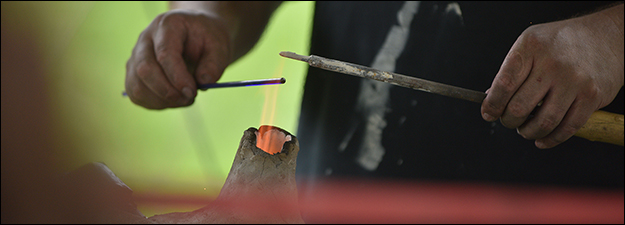Visual Cultures of Death in the Medieval Islamic World
Sponsoring Organization(s)
Special Session
Organizer Name
Luke A. Fidler
Organizer Affiliation
Univ. of Chicago
Presider Name
Luke A. Fidler
Paper Title 1
Makli, Makkah Li, Bustan-i Bahaar: The Many Faces of a Necropolis in Sindh, Pakistan
Presenter 1 Name
Fatima Quraishi
Presenter 1 Affiliation
Institute of Fine Arts, New York Univ.
Paper Title 2
Mudejarismo y muerte: Islamic Architecture in Christian Funerary Architecture
Presenter 2 Name
David M. Reher
Presenter 2 Affiliation
Univ. of Chicago
Paper Title 3
The Burial Fabrics of Fatimid Egypt: The Funerary Context of Early Islamic Tiraz Textiles
Presenter 3 Name
Jochen Sokoly
Presenter 3 Affiliation
Virginia Commonwealth Univ.-Qatar
Paper Title 4
Respondent
Presenter 4 Name
Ethel Sara Wolper
Presenter 4 Affiliation
Univ. of New Hampshire
Start Date
13-5-2016 10:00 AM
Session Location
Schneider 1155
Description
The medieval Islamic world produced a rich variety of commemorative images, practices, and materials. Much scholarship over the past century has focused on specialized forms of architecture such as shrines, monumental tombs, and the lavish mausolea erected inIran by the Ilkhanids or in Egypt by the Mamluks. Less attention, however, has been paid to the broader sphere of death's visual cultures; Finbarr Barry Flood recently noted "a remarkable dearth of serious analysis" of cenotaphs and sarcophagi.
This session queries how we might mine different objects and images made in the service of death. How might, for example, our understanding of death's visual cultures change if we looked beyond monumental architecture? What new configurations of (inter)disciplinary inquiry might yield a fuller accounting of death? Tackling evidence from across the medieval Islamic world (from Spain to Egypt to Pakistan), this session not only interrogates the relationship between theology and art practice, but also explores powerful points of theoretical and historical convergence across the broader discipline of medieval studies, noting both the methodological potential of cross-cultural perspectives and the diverse forms of exchange between populations across the Islamic world.
Visual Cultures of Death in the Medieval Islamic World
Schneider 1155
The medieval Islamic world produced a rich variety of commemorative images, practices, and materials. Much scholarship over the past century has focused on specialized forms of architecture such as shrines, monumental tombs, and the lavish mausolea erected inIran by the Ilkhanids or in Egypt by the Mamluks. Less attention, however, has been paid to the broader sphere of death's visual cultures; Finbarr Barry Flood recently noted "a remarkable dearth of serious analysis" of cenotaphs and sarcophagi.
This session queries how we might mine different objects and images made in the service of death. How might, for example, our understanding of death's visual cultures change if we looked beyond monumental architecture? What new configurations of (inter)disciplinary inquiry might yield a fuller accounting of death? Tackling evidence from across the medieval Islamic world (from Spain to Egypt to Pakistan), this session not only interrogates the relationship between theology and art practice, but also explores powerful points of theoretical and historical convergence across the broader discipline of medieval studies, noting both the methodological potential of cross-cultural perspectives and the diverse forms of exchange between populations across the Islamic world.

